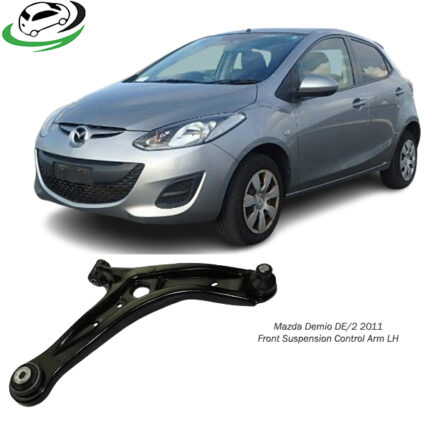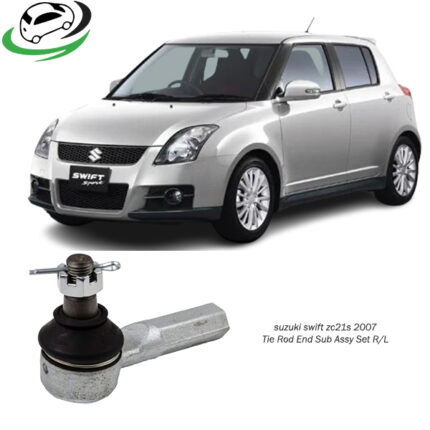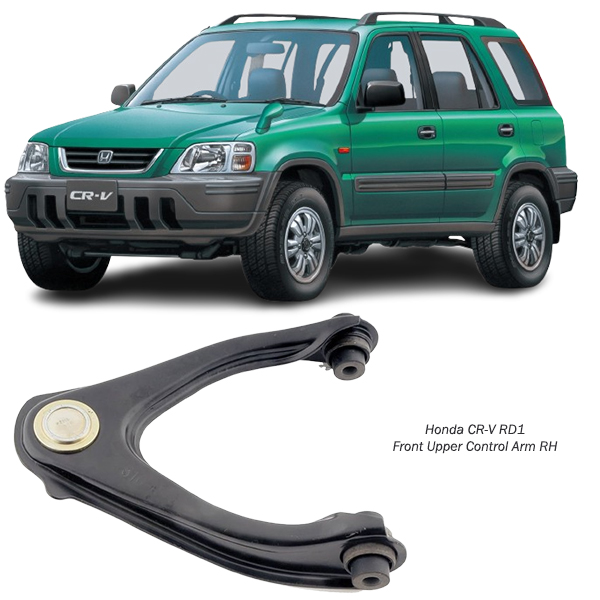-11%
Get Honda CR-V RD1 Front Upper Control Arm RH 51450-S10-020 in Kenya
The front upper control arm (Right-Hand side, RH) is a critical component of a vehicle’s suspension system. It plays a vital role in maintaining proper wheel alignment, ensuring vehicle stability, and enhancing ride comfort. This guide explores its design, functions, benefits, maintenance, and the signs of wear in detail.
What is the Front Upper Control Arm RH?
The front upper control arm RH is part of the suspension system located on the front right-hand side of the vehicle. It connects the wheel hub and steering knuckle to the vehicle’s frame or body. This arm pivots up and down as the wheel moves, ensuring the wheel remains aligned with the road during suspension travel.
The control arm typically features:
- Arm Body: A metal structure, often made from steel, aluminum, or cast iron, designed for durability and strength.
- Ball Joint: A pivot point connecting the arm to the wheel hub or steering knuckle.
- Bushings: Rubber or polyurethane components that attach the control arm to the frame, absorbing vibrations and reducing noise.
Functions of the Front Upper Control Arm RH
- Maintains Wheel Alignment:
The control arm ensures the wheel remains perpendicular to the ground and aligned with the road, which is essential for proper handling and even tire wear. - Facilitates Suspension Movement:
By allowing the wheel to move up and down independently of the vehicle’s body, the control arm helps absorb shocks and vibrations from uneven roads. - Connects Suspension Components:
It acts as a bridge between the wheel assembly and the vehicle frame, supporting the suspension system’s structural integrity. - Enhances Steering Precision:
The control arm helps maintain the wheel’s proper angle during turns, ensuring responsive and predictable steering.
Design and Construction
The front upper control arm is engineered to withstand substantial forces while being lightweight enough to avoid adding unnecessary weight to the vehicle.
- Material:
- Steel: Durable and cost-effective, commonly used in most vehicles.
- Aluminum: Lightweight, corrosion-resistant, and often found in performance vehicles.
- Cast Iron: Offers superior strength but is heavier than other materials.
- Shape:
The arm’s design varies based on vehicle type and suspension geometry. It can be a straight arm, A-shaped (wishbone), or L-shaped. - Ball Joint Integration:
High-quality control arms feature durable ball joints, allowing smooth pivoting and reducing wear. - Bushings:
Rubber or polyurethane bushings reduce vibration, dampen noise, and allow controlled movement between the control arm and frame.
Types of Control Arms
- Fixed Control Arms:
Non-adjustable arms pre-set to the manufacturer’s specifications. - Adjustable Control Arms:
Feature adjustable mounting points for fine-tuning wheel alignment, often used in performance and off-road vehicles.
Signs of a Failing Front Upper Control Arm RH
- Clunking Noises:
Worn ball joints or bushings can cause clunking or knocking sounds, especially when driving over bumps or during turns. - Uneven Tire Wear:
Misaligned wheels due to a faulty control arm can lead to uneven tire wear patterns. - Poor Handling:
Difficulty steering or reduced responsiveness may indicate a damaged control arm. - Vibrations in the Steering Wheel:
Excessive play or wear in the control arm components can cause noticeable vibrations. - Misaligned Wheels:
A failing control arm can cause the vehicle to pull to one side, indicating alignment issues.
Importance of the Front Upper Control Arm RH
- Ensures Safety:
A well-functioning control arm maintains proper wheel alignment, preventing accidents caused by unpredictable handling. - Improves Comfort:
By absorbing road impacts, the control arm contributes to a smooth and comfortable ride. - Enhances Tire Longevity:
Proper alignment reduces uneven tire wear, extending the lifespan of the tires. - Supports Suspension Geometry:
It maintains the optimal position of the suspension components, crucial for stable driving.
Benefits of Using High-Quality Control Arms
- Durability:
Premium materials and construction ensure the control arm withstands harsh conditions. - Precision Handling:
High-quality arms provide better steering response and vehicle stability. - Noise Reduction:
Superior bushings minimize noise and vibration, enhancing the driving experience. - Extended Service Life:
Quality components reduce the frequency of replacements, saving long-term costs.
Maintenance Tips
- Regular Inspections:
Check the control arms during routine servicing to identify wear or damage early. - Replace Worn Bushings:
Worn bushings can compromise the control arm’s effectiveness. Replace them promptly to avoid further issues. - Align the Wheels:
Misalignment can strain the control arm, so ensure the wheels are aligned periodically. - Avoid Overloading:
Excessive weight can stress the suspension system, including the control arms. - Clean Components:
Remove dirt and debris from the suspension system to prevent premature wear.
Replacement Process for the Front Upper Control Arm RH
Replacing a control arm requires mechanical expertise and the right tools. Here’s a step-by-step guide:
- Preparation:
Gather tools like a jack, jack stands, wrenches, and a replacement control arm. - Lift the Vehicle:
Secure the vehicle on jack stands and remove the front right wheel. - Locate the Control Arm:
Identify the upper control arm and examine its connection points. - Remove the Old Control Arm:
- Detach the ball joint from the steering knuckle.
- Remove the bolts securing the arm to the frame.
- Extract the old arm.
- Install the New Control Arm:
- Attach the new arm to the frame using the provided bolts.
- Secure the ball joint to the steering knuckle.
- Test and Align:
- Reassemble the suspension, reinstall the wheel, and lower the vehicle.
- Perform a wheel alignment to ensure proper operation.
OEM vs. Aftermarket Control Arms
- OEM Control Arms:
Designed to meet the original manufacturer’s specifications, ensuring a perfect fit and reliable performance. - Aftermarket Control Arms:
Offer various designs and materials, often at a lower cost, but quality varies by brand.
When to Replace the Front Upper Control Arm RH
- Severe Wear or Damage:
Replace the arm if cracks, bends, or significant wear are visible. - Excessive Play:
If the ball joint or bushings exhibit excessive movement, replacement is necessary. - Vehicle Age or Mileage:
High mileage or aging vehicles may require control arm replacement as part of routine maintenance.
Benefits of Timely Replacement
- Restored Alignment and Stability:
New control arms maintain proper wheel positioning, enhancing stability. - Improved Safety:
Fresh components ensure reliable handling and braking performance. - Enhanced Ride Quality:
Reduces noise, vibration, and harshness for a smoother ride. - Prevention of Further Damage:
Replacing a worn control arm prevents additional strain on other suspension components.
Conclusion
The front upper control arm RH is an indispensable part of your vehicle’s suspension system. Its role in maintaining alignment, ensuring stability, and enhancing ride comfort makes it a key component for safe and efficient driving. Regular maintenance, timely inspections, and quality replacements are essential to maximize its performance and longevity. Investing in a durable and reliable control arm ensures peace of mind and optimal vehicle operation.
Follow us on Facebook for more parts.



